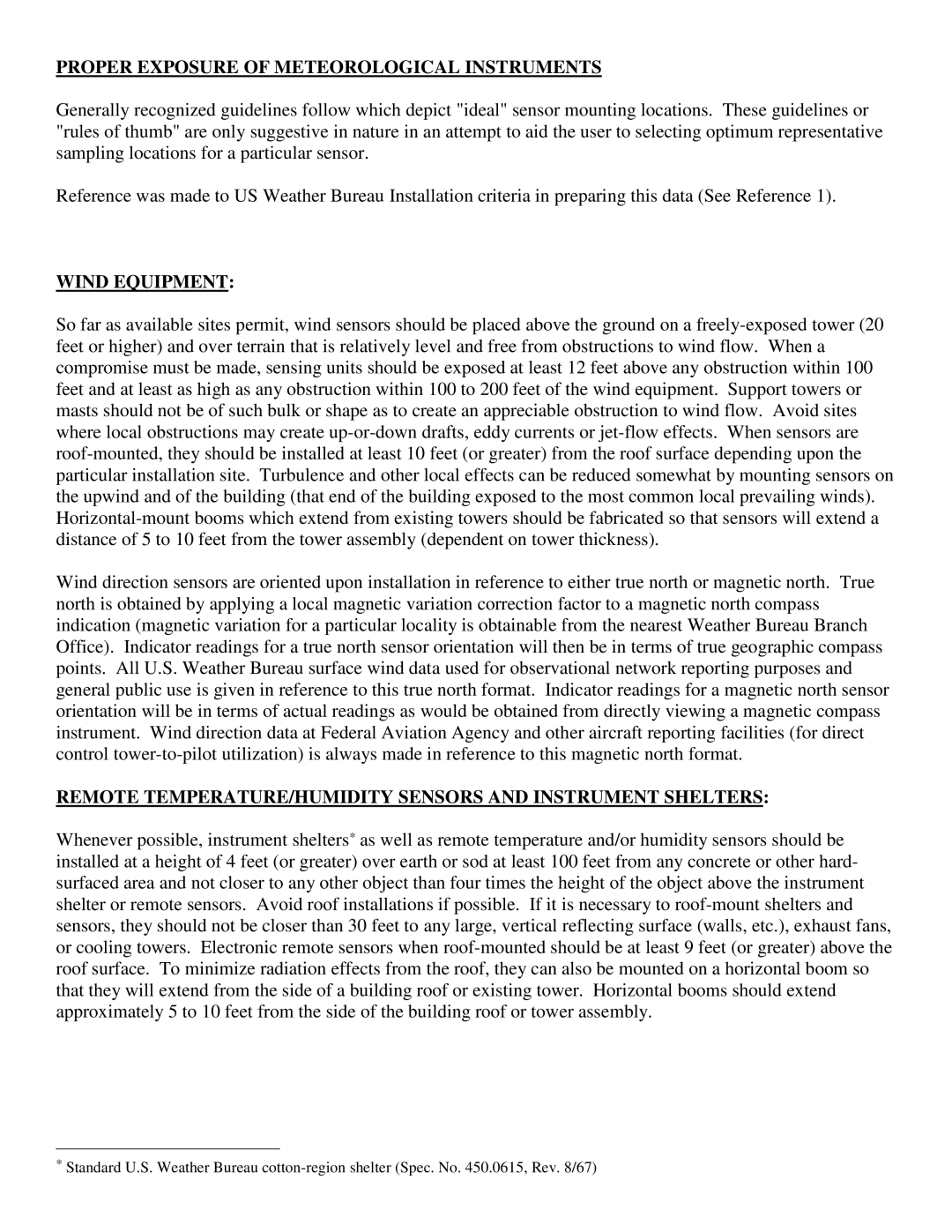TR-525USW, SERIES 525 RAINFALL SENSORS, TR-525I specifications
Texas Instruments, a leader in innovative technology solutions, has garnered significant attention with its TR-525I and Series 525 Rainfall Sensors, particularly the TR-525USW variant. These sensors are designed to provide accurate and reliable rainfall measurement, making them an essential tool for various applications including agriculture, hydrology, and environmental monitoring.The TR-525I features a robust design that allows for seamless installation and integration into existing weather stations or standalone applications. Its state-of-the-art technology ensures real-time data collection with minimal maintenance, thereby enhancing user convenience. The sensor employs a tipping bucket mechanism, which distinguishes it from traditional rainfall measurement techniques. This innovative design consists of a calibrated bucket that tips once a predetermined amount of rainfall accumulates, typically 0.2 mm. Each tip is recorded electronically, allowing for precise rainfall measurement over time.
One of the standout features of the Series 525 Rainfall Sensors is their advanced data logging capabilities. The TR-525USW variant integrates sophisticated software that enables users to monitor rainfall data remotely. This connectivity is particularly useful for agricultural planners who must assess environmental conditions regularly. The sensors can be integrated with wireless communication technologies, ensuring that data is transmitted efficiently to central databases or cloud-based platforms for further analysis.
Moreover, the TR-525 series offers excellent durability, making it suitable for various weather conditions. With IPX4 water-resistant housing, these sensors can withstand rain, snow, and other harsh environmental elements without compromising performance. The rugged design is advantageous in rural and remote locations where harsh conditions are prevalent.
Accuracy and precision are crucial in meteorological instruments, and the TR-525 series excels. With a measurement range that accommodates both light and heavy rainfall, the sensor ensures that even the slightest precipitation is recorded. Furthermore, periodic calibration ensures that accuracy is maintained over time, making it a reliable choice for critical applications.
In summary, the Texas Instruments TR-525I and Series 525 Rainfall Sensors, particularly the TR-525USW variant, offer cutting-edge technology, reliable performance, and exceptional durability. Their advanced features make them invaluable for anyone in need of precise rainfall measurements, enhancing decision-making processes in agriculture, environmental monitoring, and beyond. As weather patterns continue to change, the importance of reliable rainfall data cannot be overstated, and Texas Instruments is well-positioned to meet this need.
